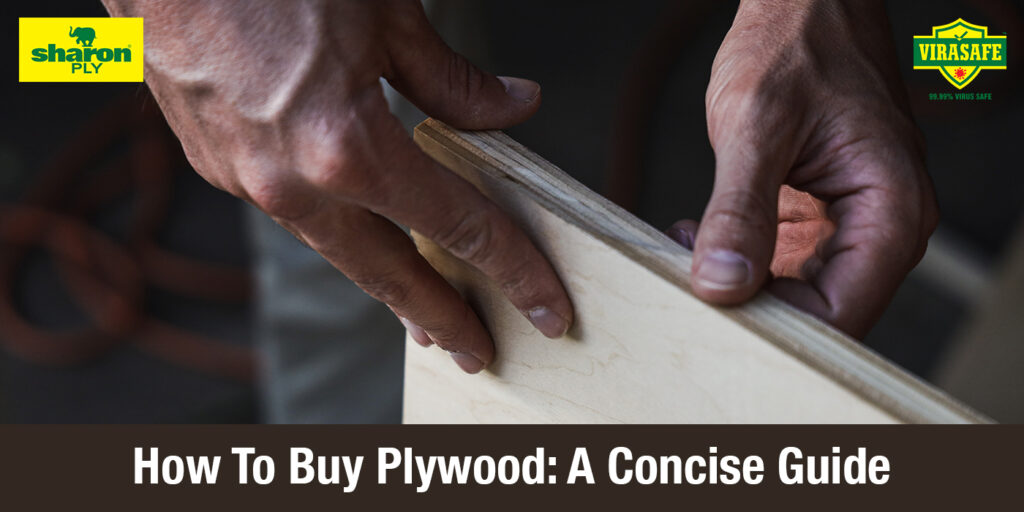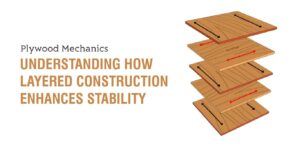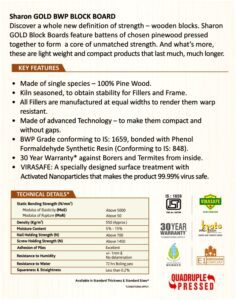



Buildings are the literal foundation of modern civilization as we know it. How deep is our understanding of the structural components of a building, however? Any architect or civil engineer… worth their salt would tell you that each building material comes with unique properties that come together to create the spaces we see. Some are more versatile and cost-effective than others, which in turn means that some materials are more ubiquitous than others. One such construction material is plywood. In many ways, plywood is the perfect storm of durability and use cases in construction, so it’s no wonder why it’s prevalent in so many buildings we see nowadays. Scratching your head as to what all the fuss about plywood is about? No worries, in this article, we’ll tell you all there is to know about plywood, and what you should look for when purchasing plywood for your constructions!
Plywood: The Basics
So what is plywood? What makes it any different from regular wood for construction? Let’s break it down.
We’ve gone over the broad strokes of what plywood is. What about the finer grain, however? Let’s take a look at the individual layers and go over each plywood type and its uses, one by one!
Exterior Plywood
As the name suggests, this type of plywood is most often used in exterior construction projects. Exterior plywood is used for walls and other parapet structures. With its primary purpose being providing protection from the elements, exterior plywood is typically multi-ply and made of hardwood. Oak hardwoods, for instance, make excellent exterior plywood sheets because of their resistance to common issues like mould build-up.
Structural Plywood
The characteristic of structural plywood comes from its strong adhesion between the layers. Structural plywood is exceptional for laying the structural framework for larger edifices. They are frequently used for both interiors and exteriors, but their durability is somewhat inferior to other plywood options commonly available in the market.
Aircraft Plywood
The unique name of aircraft plywood is derived from the seamless blend of durable wood and sleek veneers that confer significant flexibility to the plywood while also retaining its structural integrity. As you might imagine, this property makes aircraft plywood ideal for the construction of boats, aircraft and other sleek contraptions, considering how easily it can be worked into specific frames and shapes.
Overlaid Plywood
This type of plywood is slightly more on the expensive side compared to its counterparts. The wooden finish on the top is what gives this plywood its name. There’s a reason you see this plywood on many types of flooring and tile options. The overlaid wood on top gives it an inherent decorative property that offers a lot of scope for accessorizing your interiors just how you like it!
Marine Plywood
Marine plywood is a bit of a wildcard among plywoods. It comes with a specific glue that repels water. However, it’s not entirely waterproof. It’s considerably hardy and holds up to weathering quite well, hence the marine-grade classification. In terms of sheer water resistance, however, marine plywood isn’t the best in the business. It can deal with a fair amount of moisture but is not immune to the common evils that plague wood, like mildew. If you’re looking to furnish your patio or outdoor garden, then you’ll want to go with marine plywood.
MDF Plywood
What makes MDF special is that it’s made out of separate wood fibers. While it is heavier, the pros far outweigh that, with MDF being usable with a variety of painting and vinyl operations. There’s also the lack of wood chipping and flaking with MDF, which is a great plus. MDF is an all-around reliable option for durable plywood with a variety of uses.
Subfloor plywood.
This type of plywood is the go-to option for most flooring operations. Subfloor plywood comes in two variants, the OSB and the CDX. Both versions are adequate for nailing and providing a solid substrate for placing floor tiles in your interiors. The big draw of subfloor plywood is that it’s cheaper than concrete.
Plywood Purchase
The list above should give you a clear idea about the ins and outs of plywood purchasing. Plywood can be used to fulfill a vast variety of construction projects, both interior and exterior. Making an informed decision on your purchase is the first step towards that, so make sure you have all the facts and details before you buy!





















